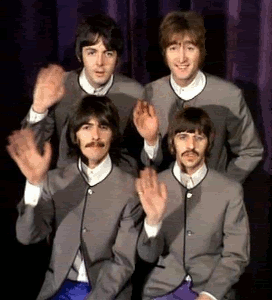Problem #1:
Solve the equation for 0 £ q < 2p
The equation is:
4+cos q = (8 + Ö2) / 2
Step 1: Subtract 4 from
both sides. One
side you will subtract 8/2.
4+cos q = (8 + Ö2) / 2
-4 -8/2
Step 2: Because there
are common denominators the two fractions can be subtracted. For example,
8-8 = 0, so you would
end up with Ö2/2.
Cos q = Ö2/2
Step
3: Use the unit circle to find q. Look for the angles
with a cosine of Ö2/2.
q
= p/4,
7p/4
Problem #2:
Find the period,
amplitude, vertical shift, and phase shift of this equation and graph it.
y = 2cos (q - (3p/4)) + 6
Step 1: The typical formula for graphing sine and
cosine functions is a ´ cosb
(x-h) + k. "h" represents the
horizontal, or phase, shift. "k" represents the vertical shift.
"a" is the amplitude and "b" is the horizontal stretch.
First we need to find
the period of the graph. The new period can be found using 2p/b. "b" = 1
in this case so the period would be 2p
Step 2: Amplitude needs
to be found next. The amplitude is 2 in this case.
y = 2cos (q - (3p/4)) + 6
Step 3: The next part
of the equation we must find is the vertical shift represented by the variable
"k." The vertical shift in this equation is 6.
y = 2cos (q - (3p/4)) + 6
Step 4: The last item
we need to find is the phase shift. When the phase shift is subtracted in the
equation it is positive on the graph. When it is added in the equation it is
negative on the graph.
y = 2cos (q - (3p/4)) + 6
The phase shift in this
equation is positive3p/4.
Step 5: Now we need to
graph this equation.
First list the angles
used for Cosine.
Cosq: 0, p/2, p, 3p/2, 2p
Then add 3p/4 to each angle.
3p/4 + Cosq: 3p/4, 5p/4, 7p/4, 9p/4, 11p/4
Second, list the
y-values.
y: 1, 0, -1, 0, 1
Then multiply the
y-values by 2 and add 6.
6 + 2y: 8, 6, 4, 6, 8
Now graph the whole equation. (I was not able to get a picture of the graph onto the blog post)
Problem #3:
Simplify the
trigonometric expression,
(tanq ´ cosq)/(cotq ´ sinq)
First, rewrite the
equation in terms of sin or cos.
((sin q/ cos q) ´ (cos q/ 1))/((cos q/ sin q) ´ (sin q/1))
Now look to see if any
of the variables cancel out.
((sin q/ cos q) ´ (cos q/ 1))/((cos q/ sin q) ´ (sin q/1))
The two cosines in the numerator cancel
out, and so do the two sines in the denominator.
This leaves us with
sinq / cosq = tanq
Problem #4
Solve the equation for
0 £
q
< 360.
-2 + tan q = (-6 + Ö3)/3
First add 2 to each
side. (on one side it will be added like 6/3)
-2 + tan q = (-6 + Ö3)/3
+2 +6/3
This leaves you with:
tan q = Ö3/3
Now we need to find
what q
equals. To find the tangent of something you need to divide its sine by its
cosine. These are the three options we have.
(Ö2/2)/(Ö2/2) = 1
(Ö3/2)/(1/2) = Ö3/3
(1/2)/(Ö3/2) = Ö3
The only one that
equals Ö3/3
is (Ö3/2)/(1/2).
Now find which angles have a sine of Ö3/2
and a cosine of 1/2 and whose tangents equal a positive Ö3/3.
q
= 30°, 210°
Reflection:
I tried to choose one problem for each of the units we have worked on this trimester. I chose to do it this way so I could use the project as a form of review for the final exam. These problems are an example of the parts of each unit that a understood the best and knew really well. I did not learn anything new with this assignment, but I did see it as a very fun way to review and challenge myself on a level I never really have before.


